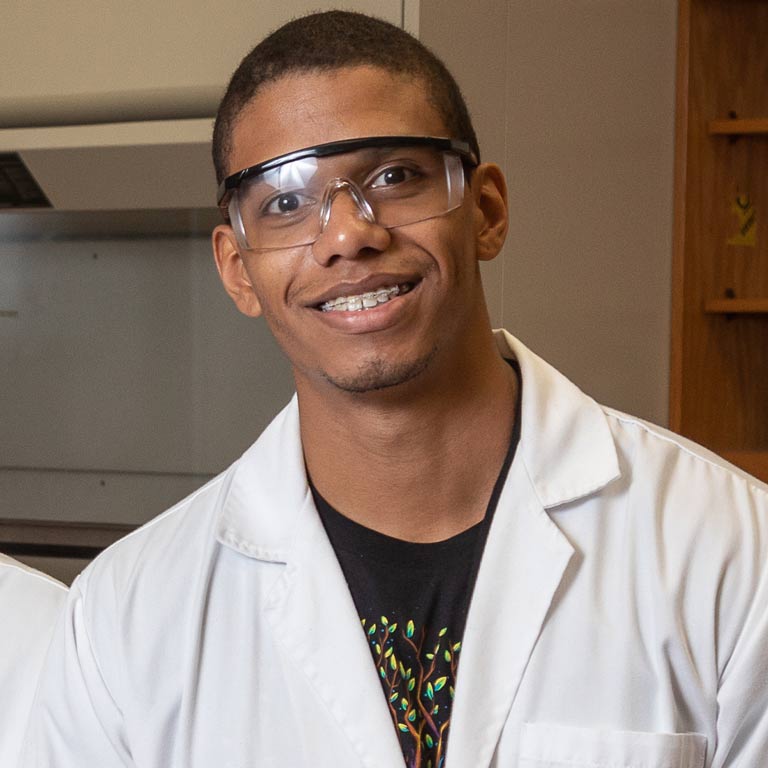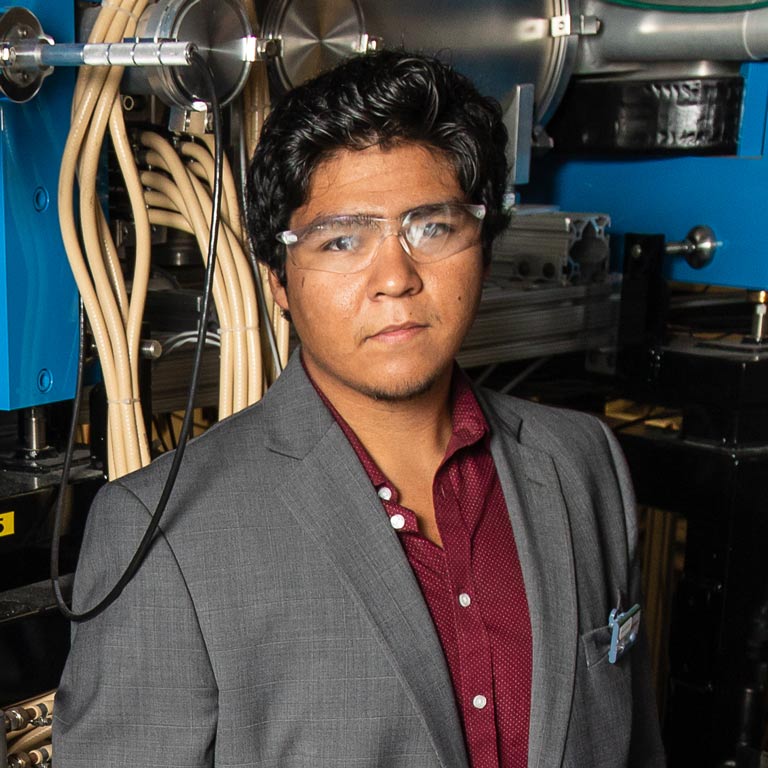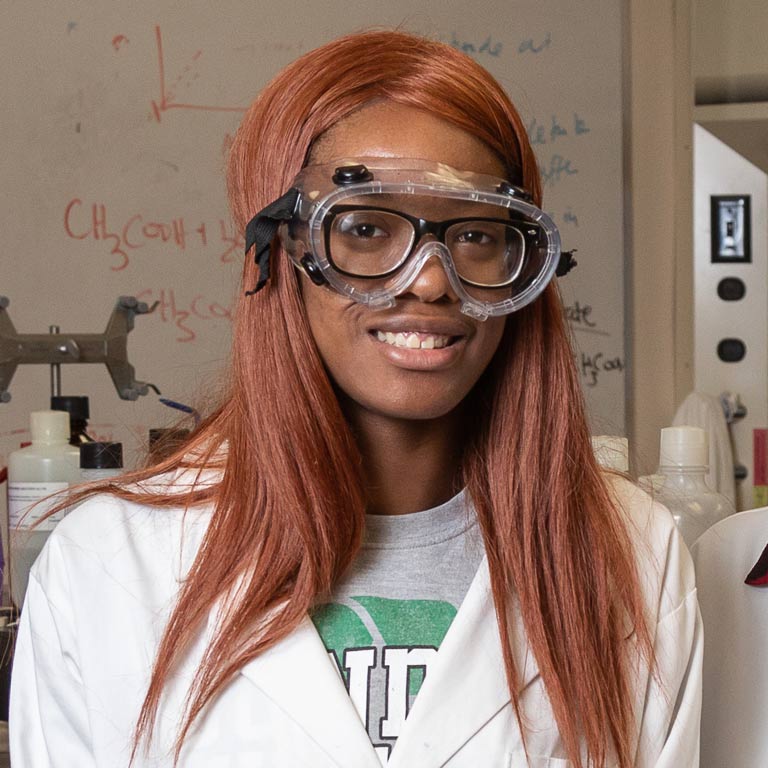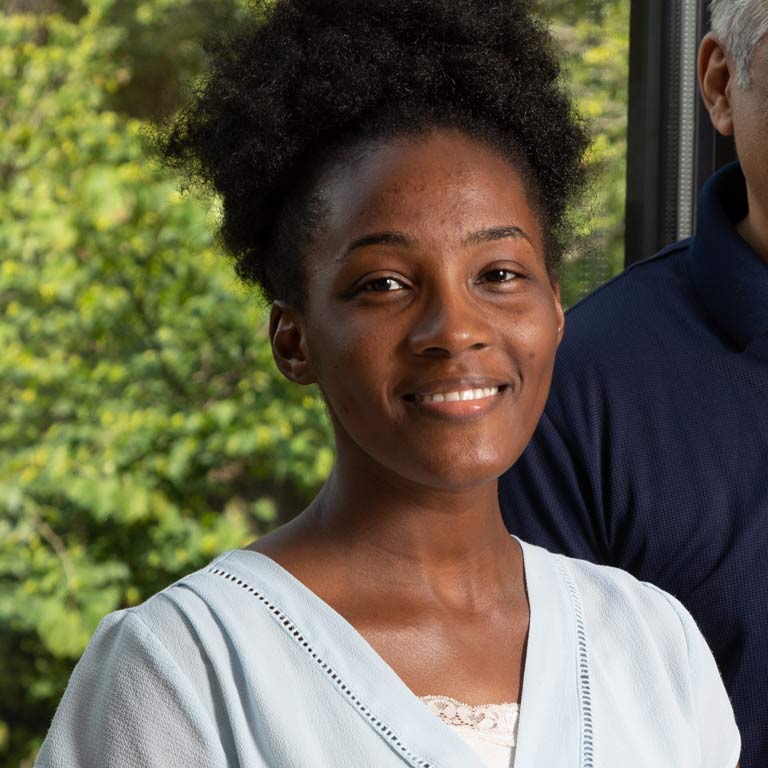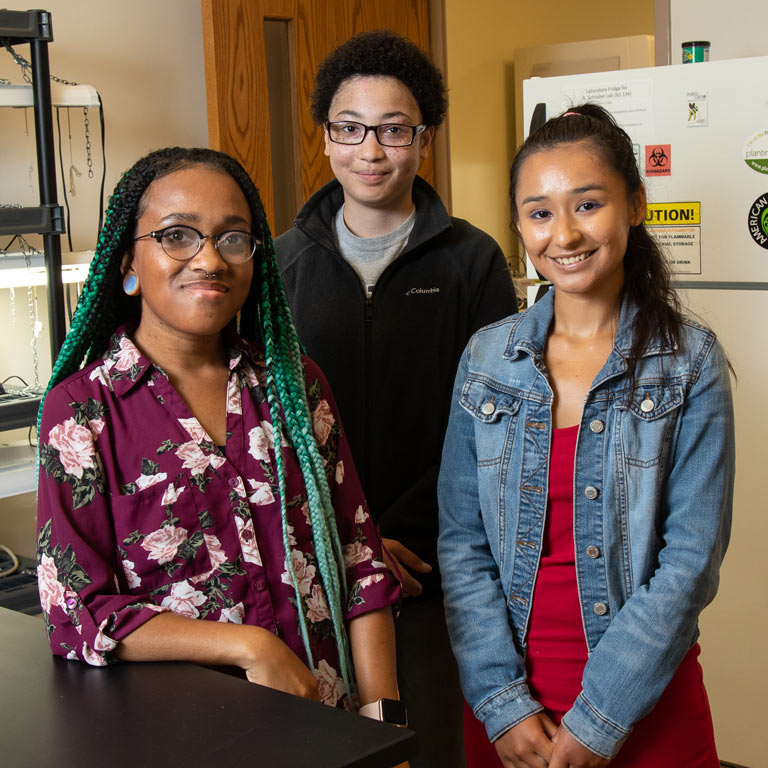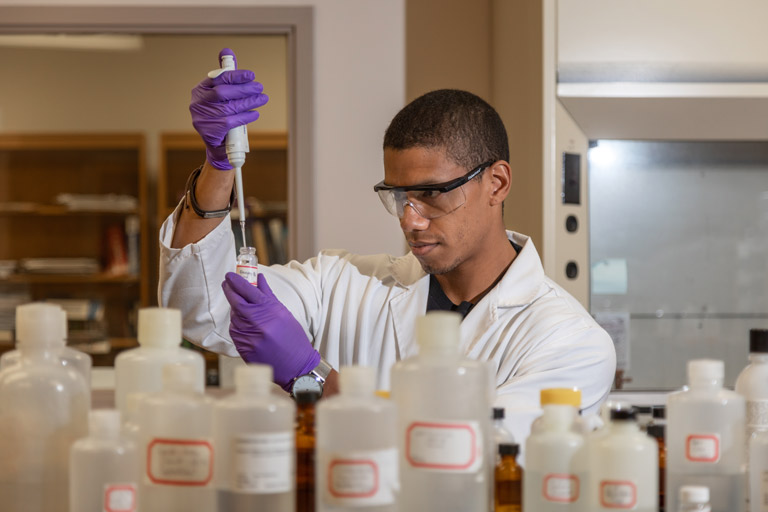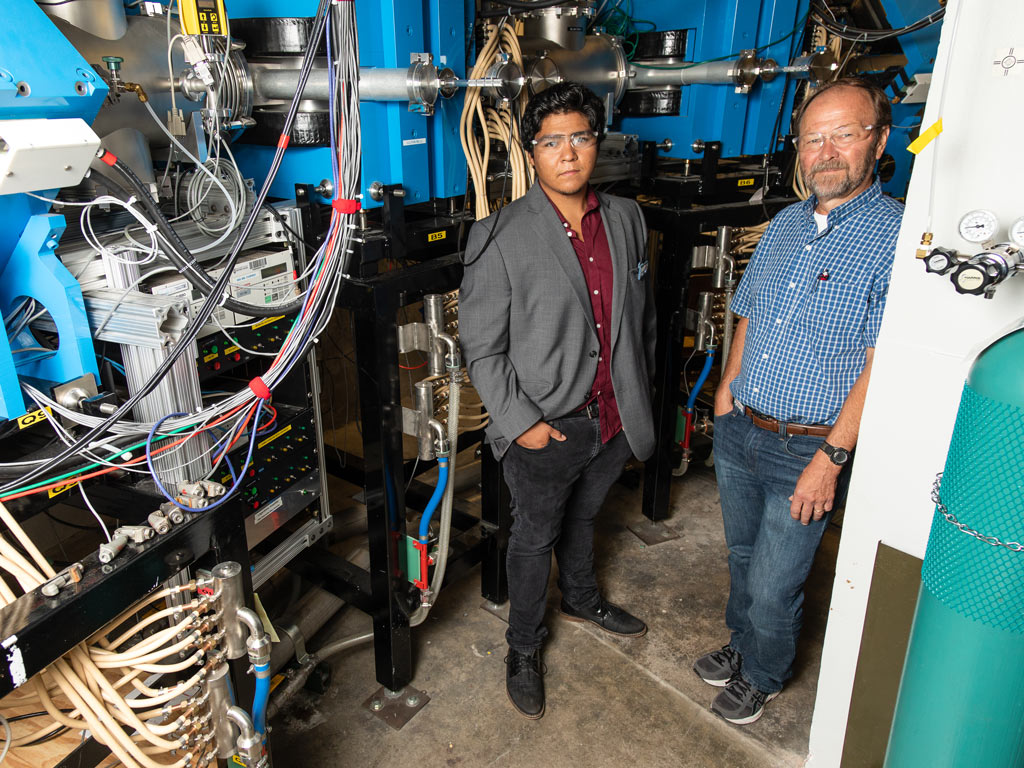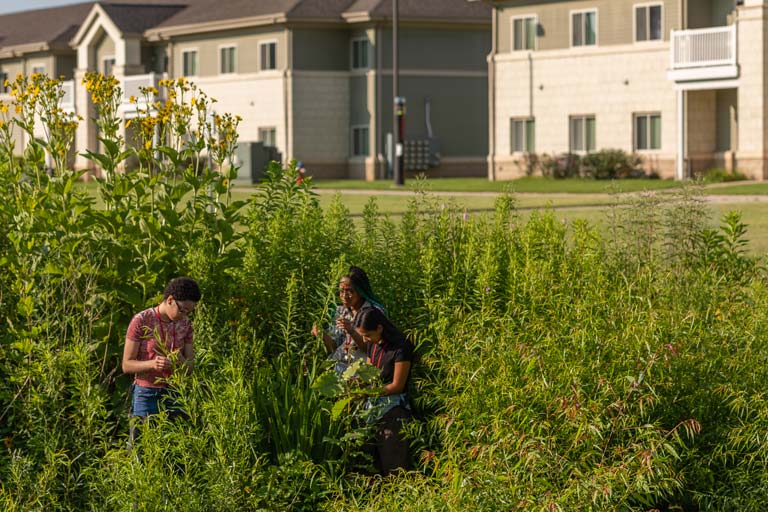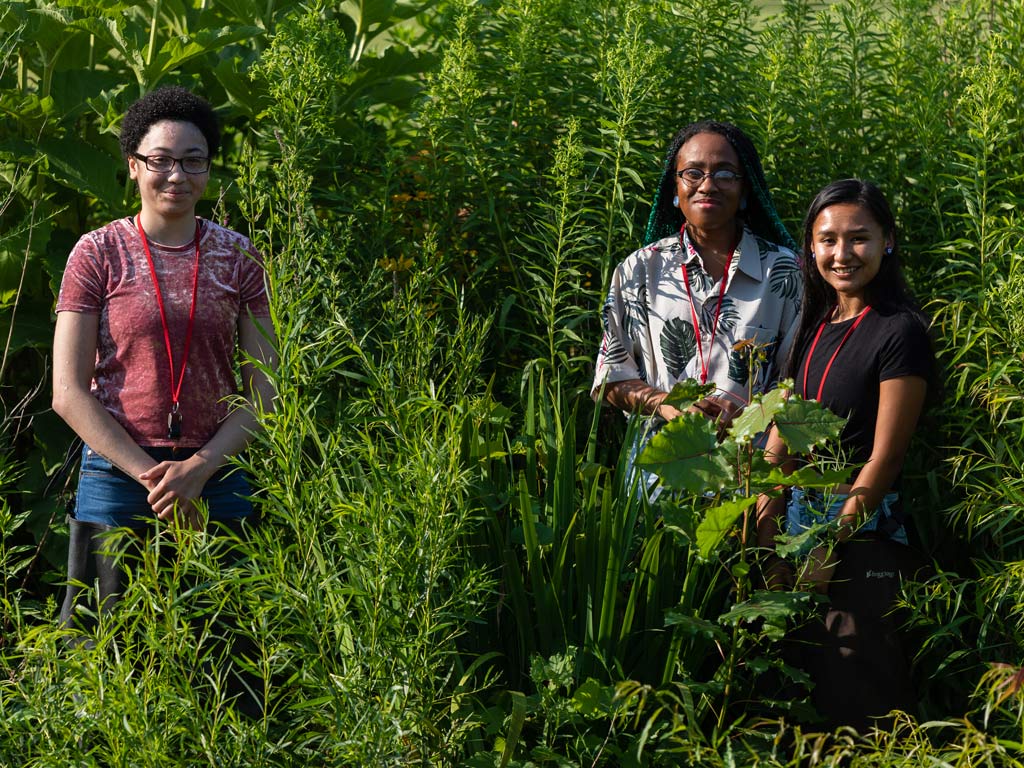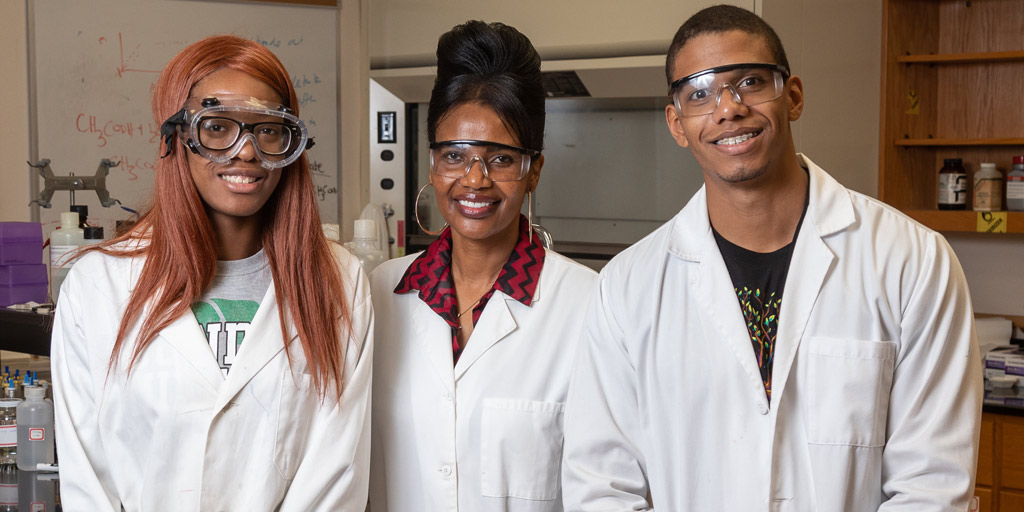
During the summer of 2019, eight IU South Bend students spent their summer working with faculty as research scholars in the Louis Stokes Alliance for Minority Participation (LSAMP) program. The LSAMP program, funded by the National Science Foundation, provides opportunities for underrepresented students in science, technology, engineering, and mathematics (STEM). LSAMP pays a stipend to students in the program, making it possible for them to spend their summer in the research lab.
“It fills my heart to watch students in the LSAMP program grow more confident and change from being students to research scholars.” said Associate Professor Grace W. Muna, the coordinator of the LSAMP at IU South Bend. “It opens their eyes to future career paths in STEM fields and instills the confidence they need to succeed in these fields,” said Muna.
Muna explained that undergraduate research fosters deep learning as students engage collaboratively under the guidance of a faculty mentor to create and solve a research problem. Students’ eight-week research projects build their knowledge of research and develop presentation skills. In the fall, students attend conferences and present their research at poster sessions.“LSAMP is an example of the efforts in the scientific community to address the imbalance of minorities in STEM fields,” said Jerry D. Hinnefeld, professor of physics and a faculty mentor to LSAMP scholar Angel Garcia-Simental.
After LSAMP students experience what academic research really can be. Muna encourages them to continue to advance research experience by applying to participate in Research Experiences for Undergraduates, a National Science Foundation summer undergraduate research program available in larger research schools. “The LSAMP program is the initial step,” she said. “It opens the door to doing research in bigger schools, where they will work with graduate students and gain an even richer experience.
After his summer experience as a LSAMP scholar working in the lab with Muna, then junior biology major Andrew Vila reimagined his career possibilities. “I found out I really like research and discovering new things,” Vila said. “I’ve decided in addition to being a medical doctor, I also want to be a full professor. I plan to pursue an M.D. and a Ph.D.”


